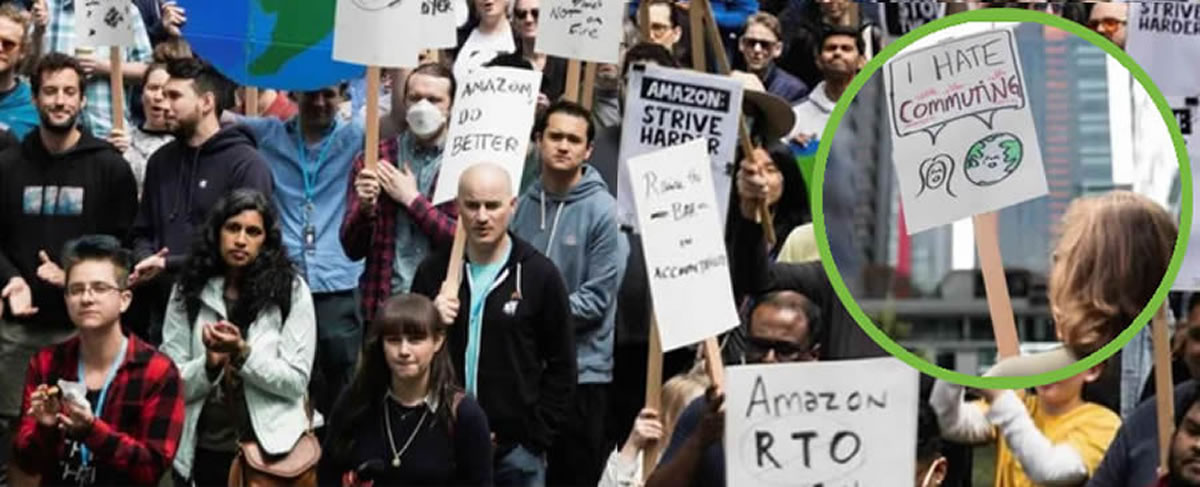TOXIC LEADERS & WORKPLACE CULTURES HARM EMPLOYEES
What am I missing here?
Many of us have experienced stress at work. But when a leader and the workplace that supports them is so toxic that an employee must go on medical leave, this should be disturbing and unacceptable to all of us.
Yet I continue to hear from people I know and have heard of others through my network that experience this stark reality. Others are contemplating it. Some have even had to go on medications to deal with their mental health as a result. 🙁
I find this astonishing.

That rather than focus on the cause of toxic workplace cultures, organizations default to supporting the injured after the fact by providing EAP or medical leave etc.
These are all band-aid solutions that focus on the victim vs. the person or persons who created the environment.
Managers can be supported with training or exited from an organization. And while I have seen this occur in some cases, more often than not, I have also seen no repercussions for said offenders. Or if an action is taken, it takes months or even years before a move is made.
Cultures can evolve and be shaped to be amazing places where all employees can come to work and have a positive experience. Even with the normal and expected stresses that come with any workplace.
This isn’t some naive utopia I am describing. Nor is it rocket science.
The fact that strong, well performing employees see no other way to manage the stressful impact of their Manager or their workplace, than to leave the organization for a period of time, should give us all pause.
Can you imagine explaining to a child why their parent can no longer go to work?

LEADERSHIP SPOTLIGHT
When the world changed in March 2020, COVID ushered in a new era for employees across the globe. Remote and hybrid work were suddenly mainstream and “Teams” and “Zoom” became part of our regular lexicon.
There has been significant research on the impact of remote or hybrid work with much of it showing increased productivity for employees who work remotely or hybrid. One such example was research published in the MIT Sloan Management Review at the end of August 2024 which found 61% respondents said hybrid has had a positive impact on productivity (16% said very positive and 45% said positive). Only 15% said it was negative.
All of this of course has presented leadership with many important questions to wrestle with. Some of these include: How important is it for employees to be in the office? How often should they be in the office? Do we trust employees to be productive while working remotely? If employees don’t come into the office, should we move office space or at least make it much smaller and reduce our overhead costs?
While it has been widely stated that sudden or full return to office (RTO) policies have been used as a way to involuntarily reduce headcount, the risk of course is who is choosing to leave your organization. Is it top talent? Emerging leaders? High potentials?
When Amazon announced at that starting in January 2025, all employees must RTO five days a week, there was an understandable outcry. But beyond the emotion, there were also some cold, hard facts. In a poll of employees conducted a few days after the announcement, 91% percent of Amazon employees said they were dissatisfied with the newly announced schedule, but importantly, 73% said they were thinking about looking for another job due to the RTO policy. 73%!
How many of those 73% are potentially regrettable losses?
There’s no doubt there are pros and cons to the new ways of working today. Face-to-face meetings have frequently been replaced by screen-to-screen meetings. Spontaneous collaboration and brainstorming are much more difficult when you are not in the office. The social bonding and cohesion that occurs when people work together in person suffers in a remote and hybrid environment.
Leaders must grapple with this issue carefully, with an open mind and be willing to challenge their own deeply held beliefs about how work gets done. There are trade-offs and risks, and gains and benefits, all of which must be analyzed, discussed and debated. This can be a time when leaders shine by demonstrating empathy and willingness to listen, or it can result in a time of extreme disruption and increased costs as employees flee for the exits and recruiting becomes the new focus.

COMMUNICATIONS 101
One of the most significant challenges facing us when we communicate is that we tend not like silence. Not even for a few seconds. We know this because when someone speaks, we are often thinking about how to respond vs. truly listening to what they have to say. This shows in our behaviour of either interrupting or speaking over someone.
While we may think we can “multitask” (listen to someone while formulating our own response), if we’re honest, this dynamic is more about our inability to be truly present and our desire to avoid even a moment of silence.
Moreover, if we tend to think about our response while someone is talking, then we are developing our response based on only partial information. And does that really make sense?
In fact, this is one of the “watch outs” communications professionals provide during media training. That is, if you begin to nod in agreement during a question while it is being asked but hasn’t been finished yet, what exactly are you visually agreeing to? This clearly can get you into trouble.
But there are other reasons to embrace active listening. Showing respect and ensuring people feel valued and heard is among the most important. And this is especially important in a workplace setting where we often need to influence others.
So next time you’re in a 1:1 with someone, a team setting or maybe even an interview, do yourself a favor and focus on the other person(s). Demonstrate you’re really “all ears” and you will be rewarded with a stronger connection and more impactful communication.
A VIDEO SHIFT
How Leaders Shape Workplace Culture – Real Stories of Impact
In this episode of Mug Talks, I discuss the crucial role of workplace culture in driving success, highlighting how leaders can shape their teams and the importance of authenticity and emotional connection, especially during tough times. Tune in for insights on leadership, culture, and resilience. To watch more visit this link

